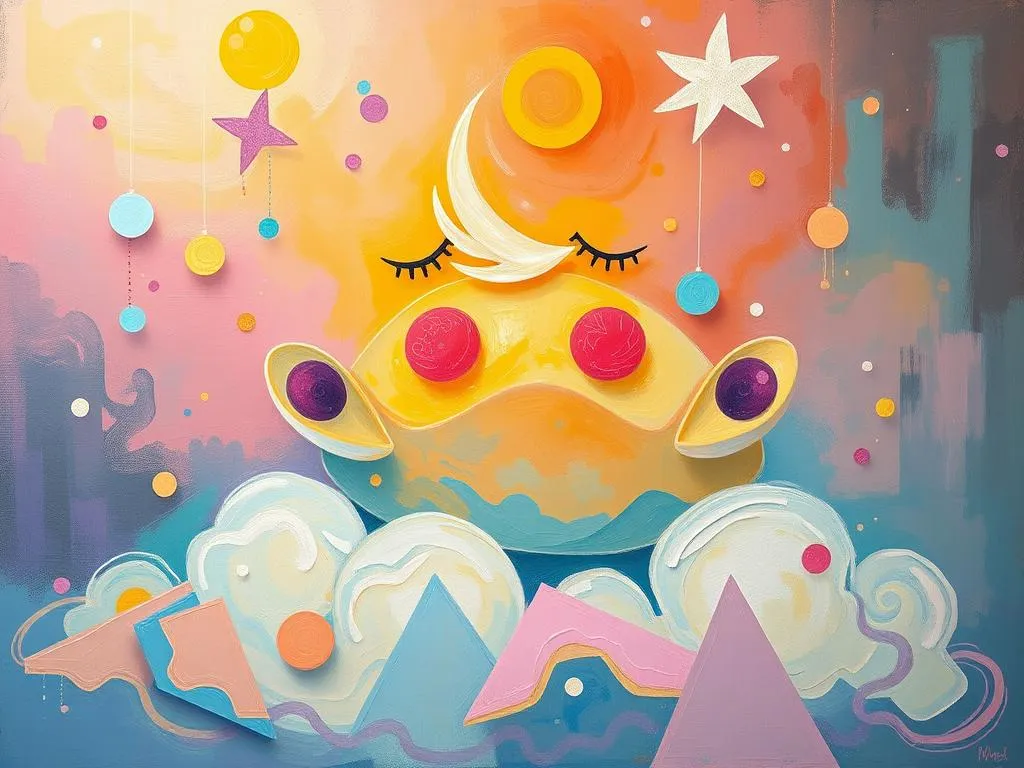
Dreams have fascinated humanity for centuries, serving as a window into our subconscious minds and often revealing hidden truths about our emotions, fears, and desires. The symbolism within dreams can provide profound insights, making the study of dream interpretation a compelling field. People are drawn to this topic because dreams often feel deeply personal yet universal, inviting us to explore their meanings and relevance in our waking lives. In this article, we will delve into the various symbols that may appear in dreams, explore key scenarios and their variations, and offer insights for connecting these dreams to real-life experiences.
Symbolism and Meaning
Dream symbols can be as varied as the dreams themselves, and their meanings can shift based on personal experiences and cultural backgrounds. One common symbol in dreams is the water, which often represents emotions and the unconscious mind. Calm waters may indicate peace and clarity, while turbulent waters might suggest confusion or emotional distress. In essence, the state of the water can provide insight into the dreamer’s emotional landscape.
Another prevalent symbol is flying, which often embodies a sense of freedom or a desire to escape from life’s constraints. The experience of flying can vary greatly; if the dreamer feels exhilarated, it may indicate empowerment and liberation. Conversely, if the dreamer struggles to fly or falls, it could symbolize feelings of inadequacy or a fear of failure.
Doors and windows are also significant symbols in dreams. They frequently represent opportunities, transitions, and new beginnings. A door that is locked or a window that is closed may indicate feelings of being trapped or limited, while an open door or window suggests readiness to embrace change and new possibilities.
Furthermore, animals in dreams can embody various traits and instincts. For example, a lion might symbolize courage and strength, while a snake could represent hidden fears or transformation. The nature of the interaction with the animal also plays a critical role; a friendly encounter might suggest acceptance of these traits, while a hostile interaction could indicate internal conflict.
The interpretation of these symbols can vary widely among individuals. Cultural background, personal experiences, and current life circumstances all play a critical role in shaping the meanings we assign to our dreams. As you reflect on your own dreams, consider what these symbols evoke within you personally, as this will provide deeper insights into their significance.
Key Scenarios and Variations
Dreams can take on myriad forms, and the specific scenarios encountered can greatly influence their interpretation. For instance, a dream about being chased often signifies avoidance or fear of confronting a particular issue in waking life. The identity of the pursuer can also provide context; if it is a loved one, it might represent unresolved feelings or conflict, while a stranger could symbolize an unknown fear or anxiety.
Moreover, the setting in which these dreams occur can alter their meaning significantly. A dream set in a familiar place, like one’s childhood home, might evoke nostalgia or unresolved issues from the past. In contrast, a dream set in an unfamiliar location may indicate feelings of uncertainty or new experiences in waking life.
Consider the scenario of being lost. This dream often relates to feelings of confusion or lack of direction in life. If the dreamer feels calm while lost, it may suggest acceptance of their current situation, while panic may indicate a struggle for control or clarity.
Another common scenario is the test dream, where individuals find themselves unprepared for an exam or performance. This type of dream often reflects feelings of inadequacy or the pressure to succeed in waking life. The outcome of the dream can also be telling; failing might indicate self-doubt, while passing can reflect confidence and resilience.
While some dreams may seem trivial, they often hold significant weight in our psychological landscape. Variations in scenario, emotion, and outcome can provide a rich tapestry of insights. By examining these scenarios closely, dreamers can uncover layers of meaning that relate directly to their life circumstances.
Real-Life Connections and Takeaways
Connecting dreams to real-life situations can be a powerful tool for self-reflection and personal growth. Understanding the symbols and scenarios in your dreams can help illuminate feelings and experiences you may not fully recognize in your waking life. For example, if you find yourself dreaming about water, ask yourself what emotions you have been experiencing recently. Are you feeling overwhelmed, or do you find moments of peace amid chaos? This kind of inquiry can lead to valuable insights about your emotional health.
Moreover, consider keeping a dream journal. Recording your dreams upon waking allows you to track recurring symbols and themes, facilitating deeper understanding over time. Reflect on the context of your dreams—what is happening in your life as you dream? Often, dreams reflect our daily struggles, aspirations, and unresolved feelings, providing a canvas to explore our internal landscape.
In addition to personal insights, dreams can also serve as prompts for action. If you frequently dream about flying, perhaps it’s time to assess areas of your life where you seek greater freedom. Similarly, if you find yourself repeatedly in scenarios of being chased, consider what aspects of your life you might be avoiding. Facing these fears can lead to transformative change.
Additionally, engaging in meditative practices or mindfulness can enhance your ability to connect with your dreams. By fostering a deeper awareness of your thoughts and feelings, you may find that your dreams become clearer and more meaningful. This practice can help you approach your dreams with curiosity rather than fear, opening the door to self-discovery and healing.
Lastly, do not hesitate to share your dreams with trusted friends or family. Discussing dreams can lead to new perspectives and insights that you may not have considered. Sometimes, an outside perspective can illuminate aspects of your dreams that resonate deeply with your waking life.
In conclusion, dreams are a rich tapestry of symbols and scenarios that can offer profound insights into our waking lives. By reflecting on the meanings of common symbols, exploring variations in dream scenarios, and connecting these dreams to our real-life experiences, we can embark on a journey of personal growth and self-discovery. Embrace your dreams, for they are not just fleeting images in the night; they are invitations to explore the depths of your psyche and unlock the mysteries of your soul.







